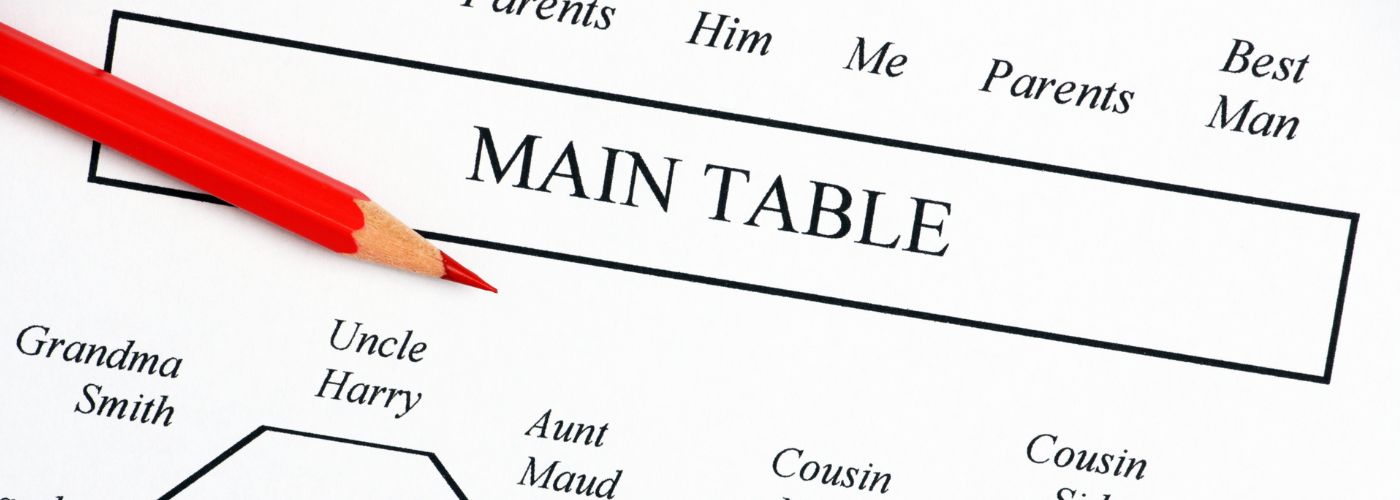Are you feeling overwhelmed at the thought of creating a wedding seating chart? You’re not alone — many couples find this task daunting! However, a well-planned seating arrangement can significantly improve your guests’ experience. In this article, we’ll provide practical tips to mapping out your wedding seating chart. With our guidance, you’ll turn a stressful chore into an enjoyable part of your wedding planning.
How To Handle Your Wedding Seating Chart
Creating a wedding seating chart is an essential part of planning your big day, and it can be done smoothly with careful thought. Start by considering the overall atmosphere you want to create.
For instance, a relaxed vibe might mean mixing up guests from different circles rather than keeping everyone in their own groups.
Think about your venue’s layout—make sure to visualize how guests will move around and where they’ll feel most comfortable. It’s also wise to take note of any dietary restrictions or special needs among your guests, as this can influence who should sit together.
To avoid stress, try using sticky notes on a board to represent each guest; this allows you to easily rearrange them until you find the perfect setup. Additionally, consider creating a small table at the entrance with a simple list showing which tables guests are assigned to, making it easy for everyone to find their seats without confusion.
Incorporate Family Dynamics into Your Chart
When creating your wedding seating chart, it’s essential to incorporate family dynamics into your chart thoughtfully. Consider the relationships between your guests.
For example, seating divorced parents at opposite ends of the table can help avoid potential tensions, while placing close friends together can enhance their enjoyment.
Think about the personalities in play; lively guests paired with quieter ones can spark unexpected conversations and create a fun atmosphere.
Don’t shy away from using visuals to help map out your seating arrangements. A simple layout on paper or a digital tool can give you a clearer picture of how everything will flow. Remember to leave a few flexible spots for last-minute changes — people often have surprises that can shift plans unexpectedly.
Categorize Guests for Optimal Placement
When mapping out your wedding seating chart, one of the most effective strategies is to categorize guests for optimal placement. Start by grouping attendees into categories like family, friends, coworkers, and plus-ones.
This helps you visualize who knows whom, allowing you to create a more harmonious atmosphere at each table. Consider mixing different groups to encourage conversation and connection among guests who might not typically interact.
You can also categorize them by interests or shared experiences. For instance, if you have friends who bond over a love of travel, you might place them at the same table. Similarly, you could group guests by their hobbies, such as sports enthusiasts or book lovers.
This not only fosters engaging discussions but also helps guests feel more comfortable and included.
Create a Backup Plan for Last-Minute Changes
When mapping out your wedding seating chart, consider creating a backup plan for last-minute changes. Life happens, and sometimes guests may not show up or unexpected additions come along.
Having a flexible seating arrangement allows you to adjust without stress. Using a digital tool or app can help you easily rearrange names and keep track of who sits where, ensuring that any changes won’t throw off your entire seating layout.
This way, you can focus on enjoying your special day rather than worrying about logistics!
For last minute changes, it’s important to have a designated point person, such as a wedding planner or a trusted friend, who can handle any seating adjustments on the day of the event. This person should be familiar with your seating chart and the overall layout of the wedding venue.
Incorporate Special Needs into Your Seating Arrangement
When creating your wedding seating chart, incorporate special needs into your seating arrangement. Make sure to place guests with mobility challenges near exits or restrooms for easy access.
If you have elderly relatives, consider seating them at tables that are quieter and easier to navigate. By taking these details into account, you’ll ensure everyone feels valued and included, making your celebration even more memorable.
You can also incorporate special needs for your seating chart by considering dietary restrictions and preferences. Make a note of any guests who require gluten-free, vegetarian, or other specific meal options, and ensure they are seated at tables where these accommodations can be easily managed.
Use Software Tools for Faster Changes
When it comes to mapping out your wedding seating chart, leveraging software tools can make the process smoother and more efficient. These digital platforms allow you to drag and drop guests, instantly visualize the layout, and make faster changes as needed.
Imagine being able to rearrange a table with just a click, rather than erasing and redrawing on paper. This flexibility not only saves time but also reduces stress, letting you focus on other important details of your big day.
Another tip is to consider the dynamics between your guests. Think about who will get along well and who might prefer some distance. Use color coding or symbols in your seating chart software to signify these relationships, making it easier to group guests appropriately!



